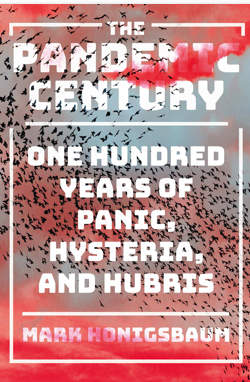It’s been 3 years since DA Henderson died. As I’ve done each year since, I try to remember this giant of infectious disease and public health by thinking about how much worse off our field is without his towering presence and all the wisdom he so easily imparted. For those that don’t know, DA was the architect of the smallpox eradication campaign — arguably one of mankind’s greatest achievements — and a pioneer in myriad other public health campaigns, the dean of the premier school of public health, and eventually founded what became the Center for Health Security, where I met him and was mentored by him.
One way to acutely concretize the gap in the field, is to pose 10 questions to DA about current infectious diseases problems and try and ask yourself “What would DA do?” Here are 5 I came up with for this year:
1. How would you manage the current Ebola outbreak? This outbreak, the 2nd largest in history, is particularly challenging not because the virus has changed but because of the security situation and distrust of health authorities has made control impossible, despite the use of a very effective vaccine. I remember during 2014, how we offered the idea of focusing on the most contagious individuals — those with severe symptoms, emanating body fluids. However, in this outbreak some of the cases are not showing up at treatment centers (where experimental treatments are seeing great success) and a shadow outbreak is occurring. What would you do? Get aggressive like with smallpox eradication, finding the cases and treating them.
2. What do you think about the US on the cusp of losing its measles elimination status? This one is embarrassing and I suspect you would be furious as all the hard work you did in building expanding programs for immunization is being squandered. When elimination status passes, what do we do next? Should the US try to eliminate it again or is the anti-vaccine movement to strong and our voices in favor of vaccines too weak to win back the country from measles?
3. Is polio eradication feasible any longer? I know this is something that you had strong opinions on — when didn’t you have a strong opinion? — and things have only gotten worse. Wild polio is still spreading in Afghanistan and Pakistan with numbers increased this year over last. It doesn’t seem like the Taliban is every going to be in support of this program which is costing more and more money. People are still chasing vaccine-derived polio — something which you convinced me should be a separate task from wild polio.
4. How would you gauge recent activities with Russia and North Korea? Your prescient warnings about biological weapons and the expertise you leveraged to build US biosecurity programs are unmatched. You debriefing Soviet defectors and changed the way the world approached this threat. Now, we face belligerent actions with Russia using Novichok agents on British soil (a word that was classified when you were alive) and North Korea using VX in plain daylight. Syria has employed chemical weapons in war as. This use of chemical weapons so brazenly likely means that biological weapons are not necessarily a taboo for state-actors and indeed there are reports of increased interest in their use. What should we do to prepare? How would you augment activities??
5. Is HIV transmission elimination possible in the US? You worked on the early days of HIV when it was an incurable death sentence and saw it become an eminently treatable infection. Now with the concepts of U=U and PrEP, there is the prospect of halting transmission. How would you direct this program? Right now, it appears the HIV epidemic in the US is non-homogenous with certain counties accounting for the majority of new transmission. Would this be the thrust of the best approach ? How do we increase PrEP use? Make it over the counter?
These were just a selection of 5 questions I would desperately want to know DA’s thoughts on. It’s been 3 years since I could just walk several feet to his office, gaze at all his presidential citations and awards, and see that giant sitting there eagerly answering question after question that occurred to me.
His portrait looms large at the Center, but his spirit looms even larger.





